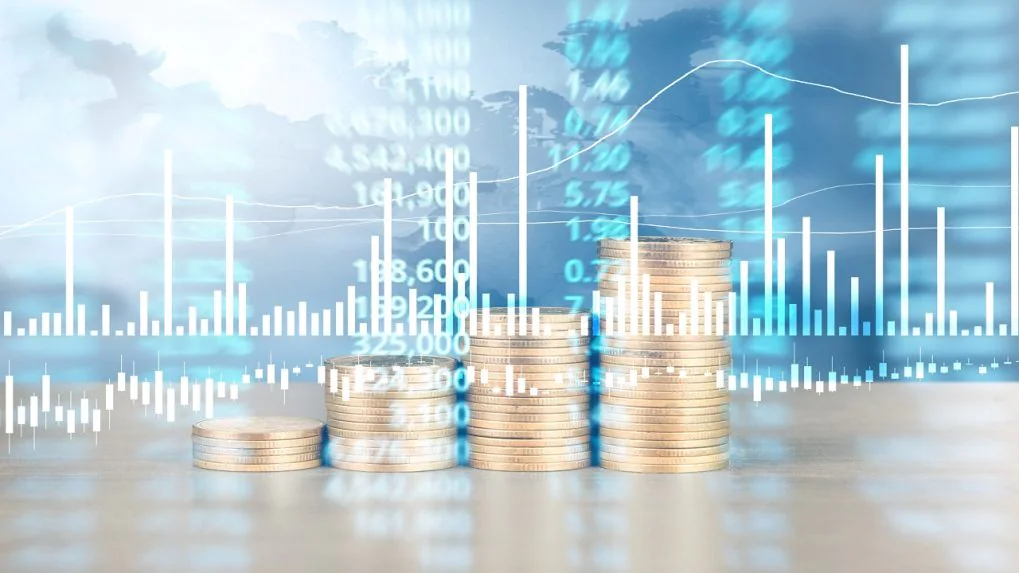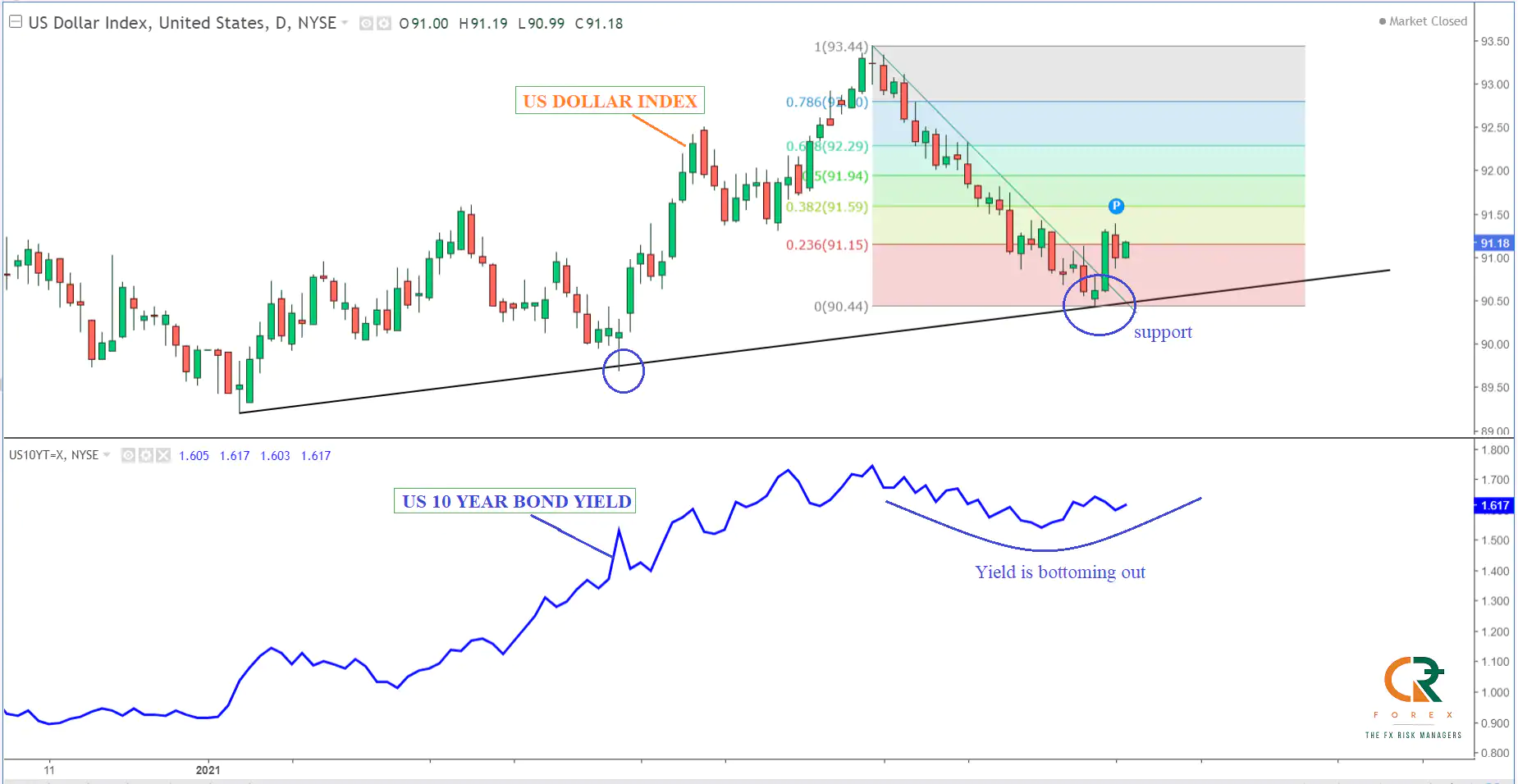- May 4, 2021
- Posted by: Amit Pabari
- Category: World

After one in century kind of pandemic the growth of the economy should be strongly supported by everyone- Central bank, government and public too.
After commitment towards higher liquidity by FOMC, Biden’s infra cum healthcare plan should lead to the higher marginal propensity to consume; that is proportion of raise in pay that consumer spends on the consumption of the goods and services. If the US increases its spending habits then definitely growth will be extraordinary in the upcoming time and inflation will remain above targeted levels for prolong period of time. And this is what likely to be discounted in the “US bond yield” and “US dollar index” and we could see further higher levels.
Now let’s discuss each pillar in detail to get an exact idea how things are shaping-up in favour of the US economy:
1. Fed checks longevity of the economic data to turn
The expectation is what the market is discounting and reality is what the fed is accepting. Although, the reality is also supporting the US growth story. The recently released data suggests that US GDP increased at 6.4 percent annualized rate last quarter- it was the biggest first-quarter jump in growth since 1984.
The inflation and expected future inflation both have accelerated, but many economists, including Fed officials, expect it will be transitory as the labor market remains below its peak in February 2020. Probably, the fed is chasing “Phillip curve”- Inverse relationship between rates of unemployment and corresponding rates of rises in wages(part of inflation). If not today, then when will fed turn Hawkish? Definitely, in the nearest future fed will realize the actual growth in the economy and will start following the market’s expectation. And that is big positive for the US dollar index.
2. Biden’s boom is boosting the economy
Joe Biden’s unprecedented coronavirus relief package worth $1.9 trillion is helping to boost economic growth. And then $2 trillion stimulus to overhaul “Once in generation” spending plan by upgrading the nation’s infrastructure & healthcare. Further, the rollout of vaccines which is a form of stimulus itself. The funding of the same will be done through another plan called “Tax Hike”.
The white house plans to nearly double the capital-gains tax rate for investors who earn more than $1 million a year. On selling long-term capital assets the revised tax would be 39.6 percent- currently it is 20 percent. And for stocks the revised tax would be 43.4 percent- currently it is 23.8 percent. The new taxes will touch just 0.3 percent of Americans who hardly face trade-off between consumption and investments. And the given revised tax bracket will have minimalistic impact on their wealth. Overall, the thought process seems in favour of the restoration of economic growth and so bullish for the US dollar.
3. Atlast, Citizens are king
The above two key factors- Fed’s higher liquidity and Biden’s fiscal plans are strongly addressing both immediate and future public issues. Now it’s up to the US citizens, whether they want to grab this opportunity, or wanted to remain cautious. Let’s look at the income, saving and consumption rate. The U.S. household incomes jumped by 21.1 percent in March to $4.21 trillion. The average savings rate of US over the last 10 years was about 6 to 8%, which hit a record high 32.2 percent in April. This bunch of savings is almost doubled compared to May 1975 figure during a recession.
In any economy, older and richer group tend to spend less and save more as a percentage of income, and the inverse is true for younger as they spend more to enjoy at fullest and poorer people to mitigate their needs. Whereas, the personal consumption expenditure (PCE) increased to $616billion or 4.2 percent- which is not yet picked up due to work from home or slow opening of the economy. Currently, the sentiment in US citizens seems optimistic as consumer confidence jumped to a 14-month high in April at 121.7. Thus, expenditure rate likely to shoot up significantly higher as income and saving rates are higher. This will get discounted into the higher GDP and hence Dollar will appreciate against its peers.
Technical Outlook:
The below weekly US Dollar index chart suggests that the index was tracking a trendline support zone of 90.30-90.50 very closely. The recent bounce seems quite promising and we can expect further pullback up to 92.30 (61.8 percent retracement) to 93.50 levels (Previous high) in the near term. On the downside, the recent low is likely to remain strong support. Further, US bond yield can be seen bottoming out near 1.50 levels and steadily turning higher towards its previous high above 1.75 percent.
Conclusion:
In nutshell, analyzing fundamental factors deeply suggests that the US economy is on its way to show the largest growth over the decades on strong support from Fed and Joe Biden both. Additionally, a higher vaccination program can be considered as another stimulus for them. Once a hotel, restaurant, Bar and other luxury will open at their fullest levels then definitely spending levels will increase, and that will get reflected in the economic data and dollar index. Hence, medium to long-term view on the US dollar index remains bullish with a potential retesting of 93.50 and 95.00 levels.
-Amit Pabari is the managing director of CR Forex Advisors. The views expressed are personal.
Leave a Reply
You must be logged in to post a comment.


